Out of the Fog: Amazing SpaceX Launch Photos of Canada's Radarsat Constellation
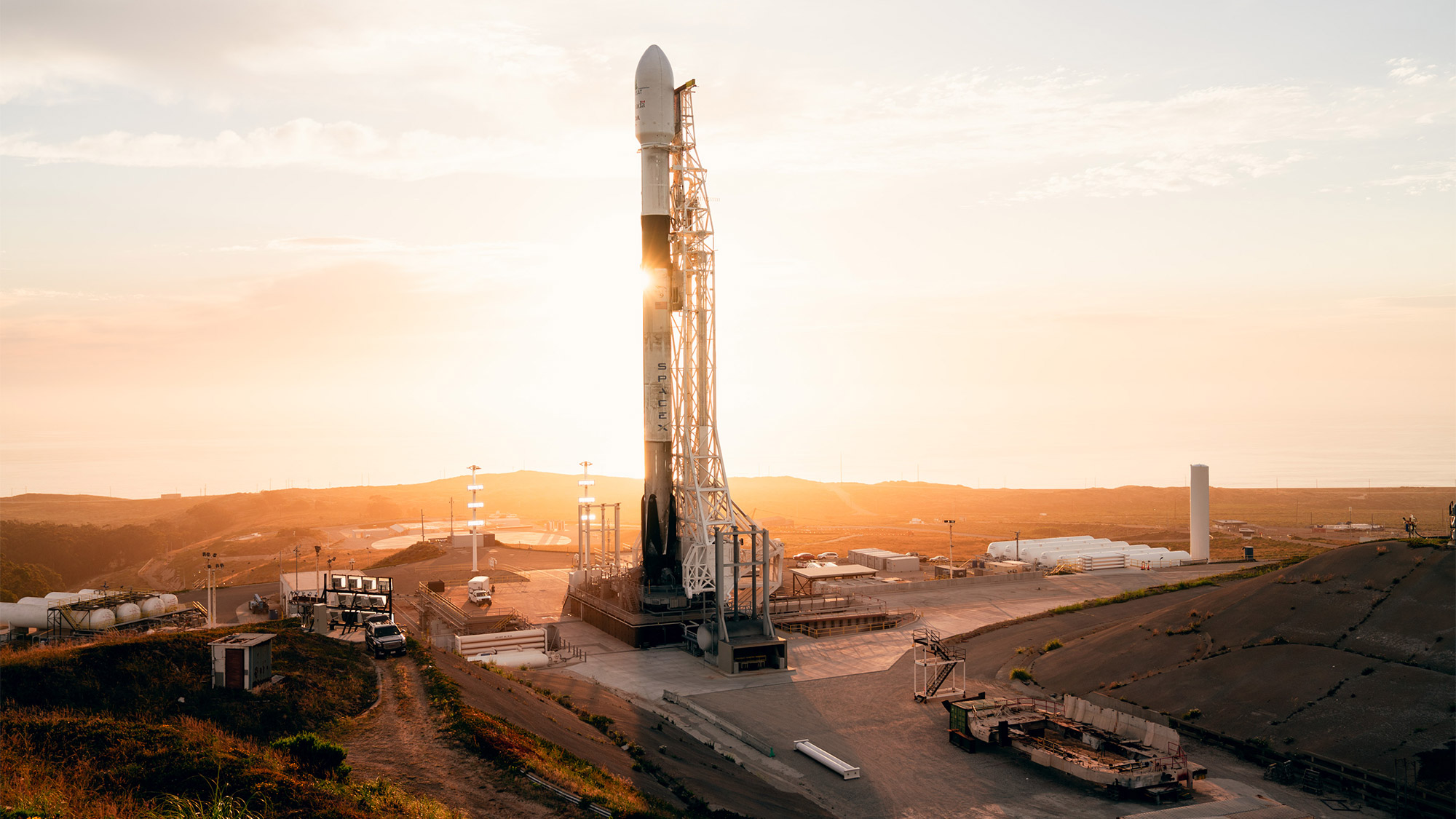
SpaceX's Radarsat Success
On June 12, 2019, a used SpaceX rocket launched three satellites for Canada's Radarsat Constellation Mission to study Earth from space. The mission lifted off from Space Launch Complex-4E of the Vandenberg Air Force Base in California and featured a stunning rocket landing.
See amazing photos of the Radarsat launch here, along with an amazing video of the first 9 minutes of the mission (with the booster landing included) below. This image shows the SpaceX Falcon 9 and its Radarsat payload at the seaside SLC-4E launchpad as a brilliant sun shines in the background.
This sunny day wouldn't last through the launch, as you'll see in the images to come.
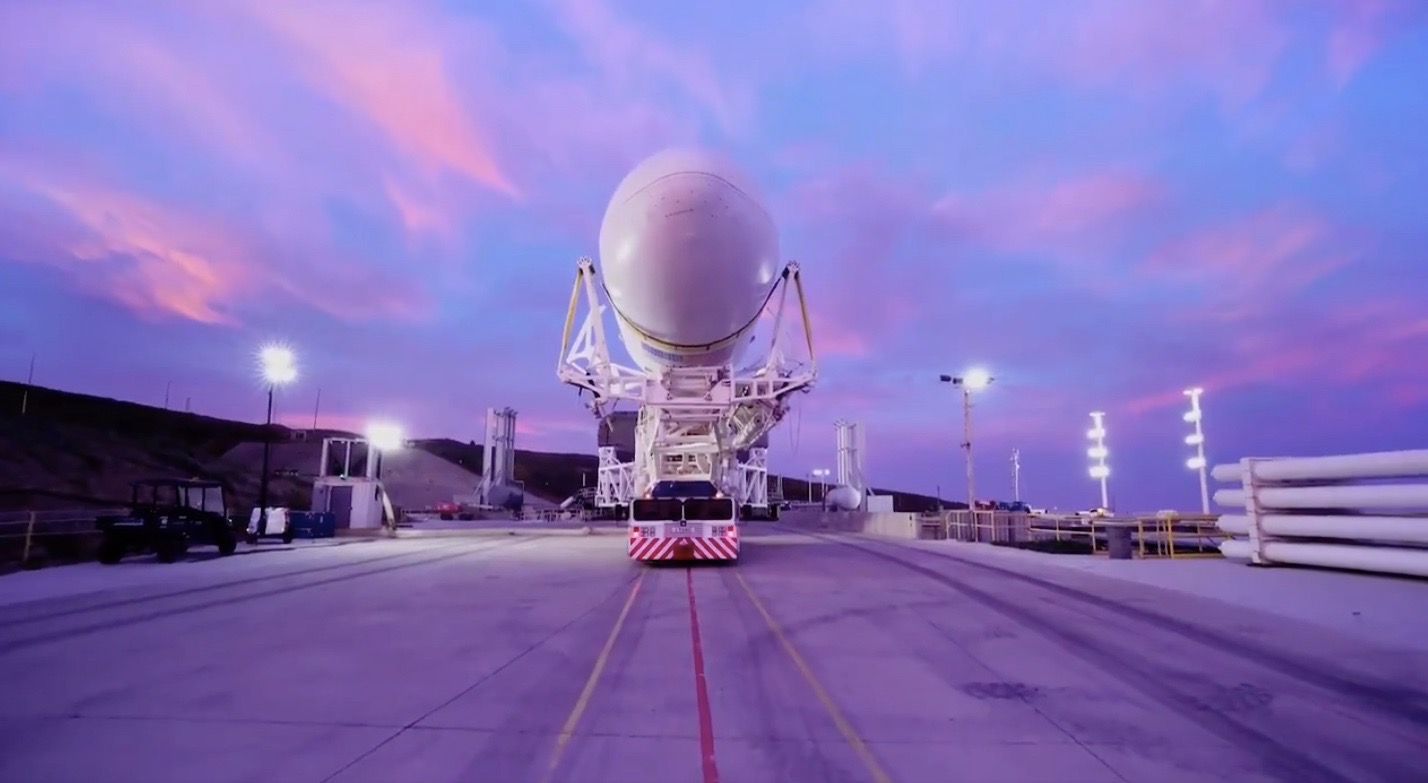
Rollout
The SpaceX Falcon 9 rocket is rolled out to launch position in this image from a video still released by the company in the days before the Radarsat Constellation Mission launch. The mission included three Radarsat Earth-observation satellites built by Maxar for the Canadian Space Agency to study Earth's oceans and other targets in unprecedented detail.
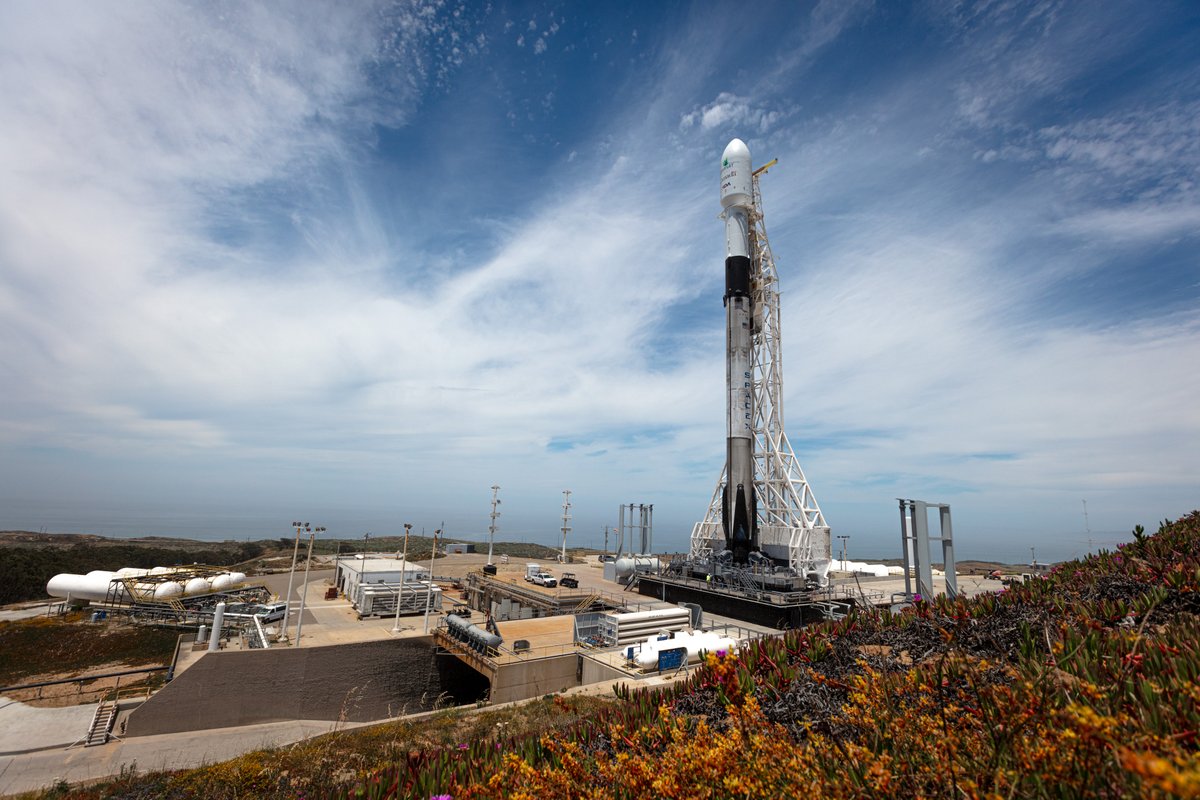
Rockets and Flowers
This picturesque view shows SpaceX's Falcon 9 rocket with bright orange flowers of spring in the foreground while windswept clouds offer a stunning backdrop in the days ahead of launch. The Falcon 9 rocket stands about 230 feet (70 meters) tall and features a reusable first stage (seen here with soot from a previous launch) and a disposable upper stage.

A Used Rocket
The worn nature of the first stage of SpaceX's Falcon 9 rocket is clearly visible in this image of the booster taken just before it launched the Radarsat Constellation Mission. The rocket's second stage (the top section with the nose cone above the black marker) was brand new, but the first stage was used to launch SpaceX's Crew Dragon demonstration flight from NASA's Kennedy Space Center in Florida in March 2019.
SpaceX eventually hopes to refly its Falcon 9 first stages at least 10 times (this was the second flight for the booster), if not more.
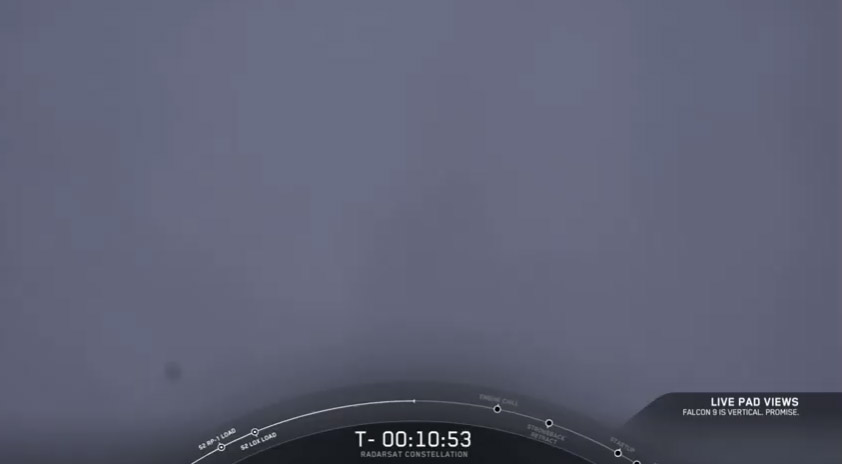
Foggy Forecast
On launch day, a thick layer of fog blanketed Space Launch Complex 4E at Vandenberg Air Force Base in California. The launchpad was completely obscured as the minutes ticked down to SpaceX's launch time.
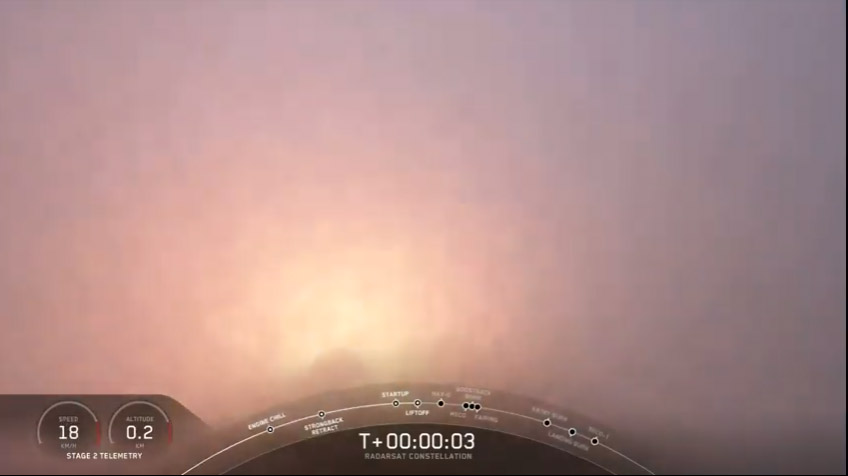
Liftoff!
At 10:17 a.m. EDT (7:17 a.m. PDT/1417 GMT), the nine Merlin engines of SpaceX's Falcon 9 rocket ignited to launch the Radarsat Constellation Mission into space. Because of the fog, the launch appeared as little more than a misty glow to cameras watching the launch site.
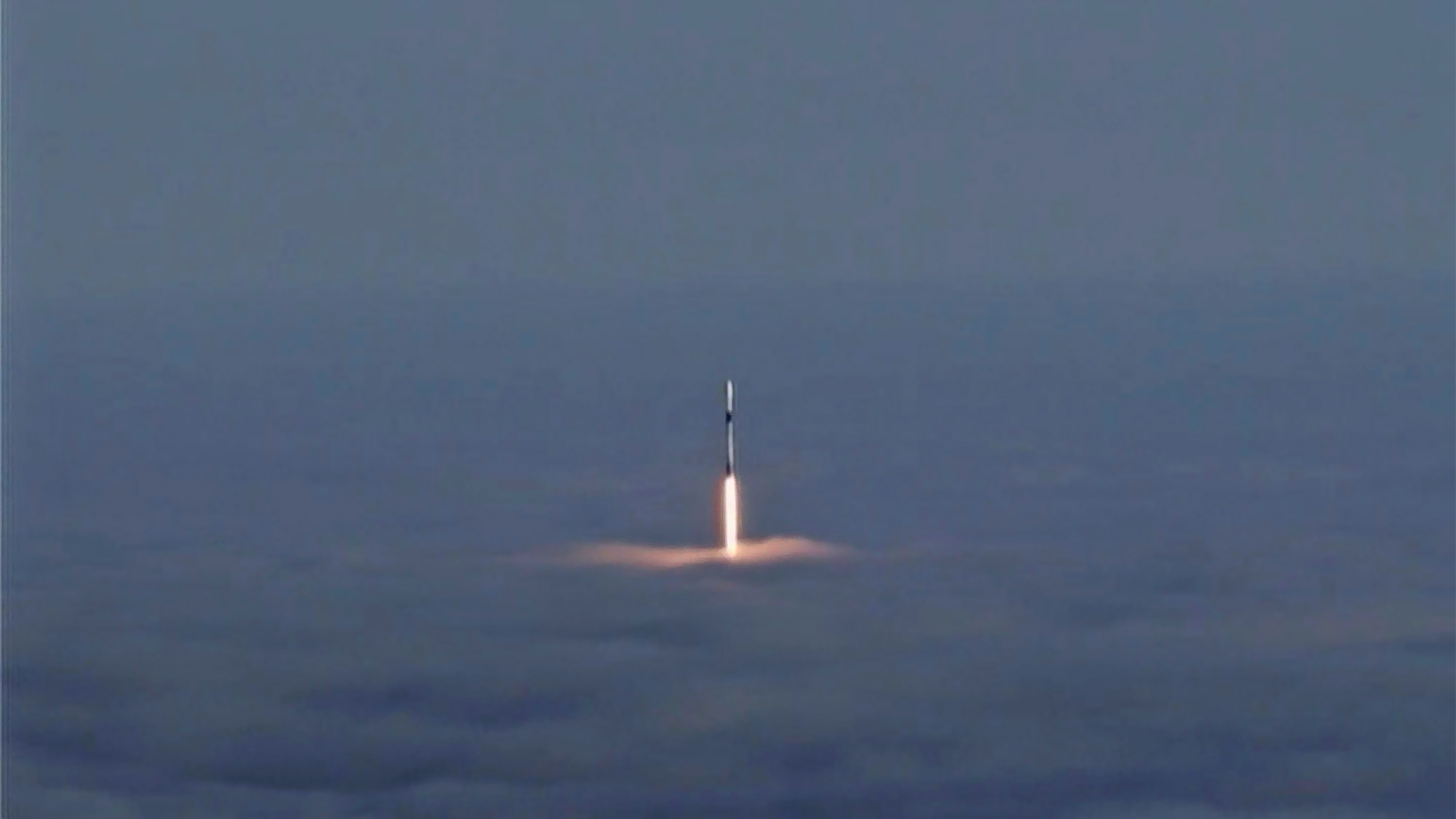
Into Clear Air
But once the Falcon 9 rose above the cloud layer, it offered a brilliant spectacle to launch photographers. This still from a launch video shows the rocket rising above the fog layer as it carries the three Radarsat satellites up toward space.
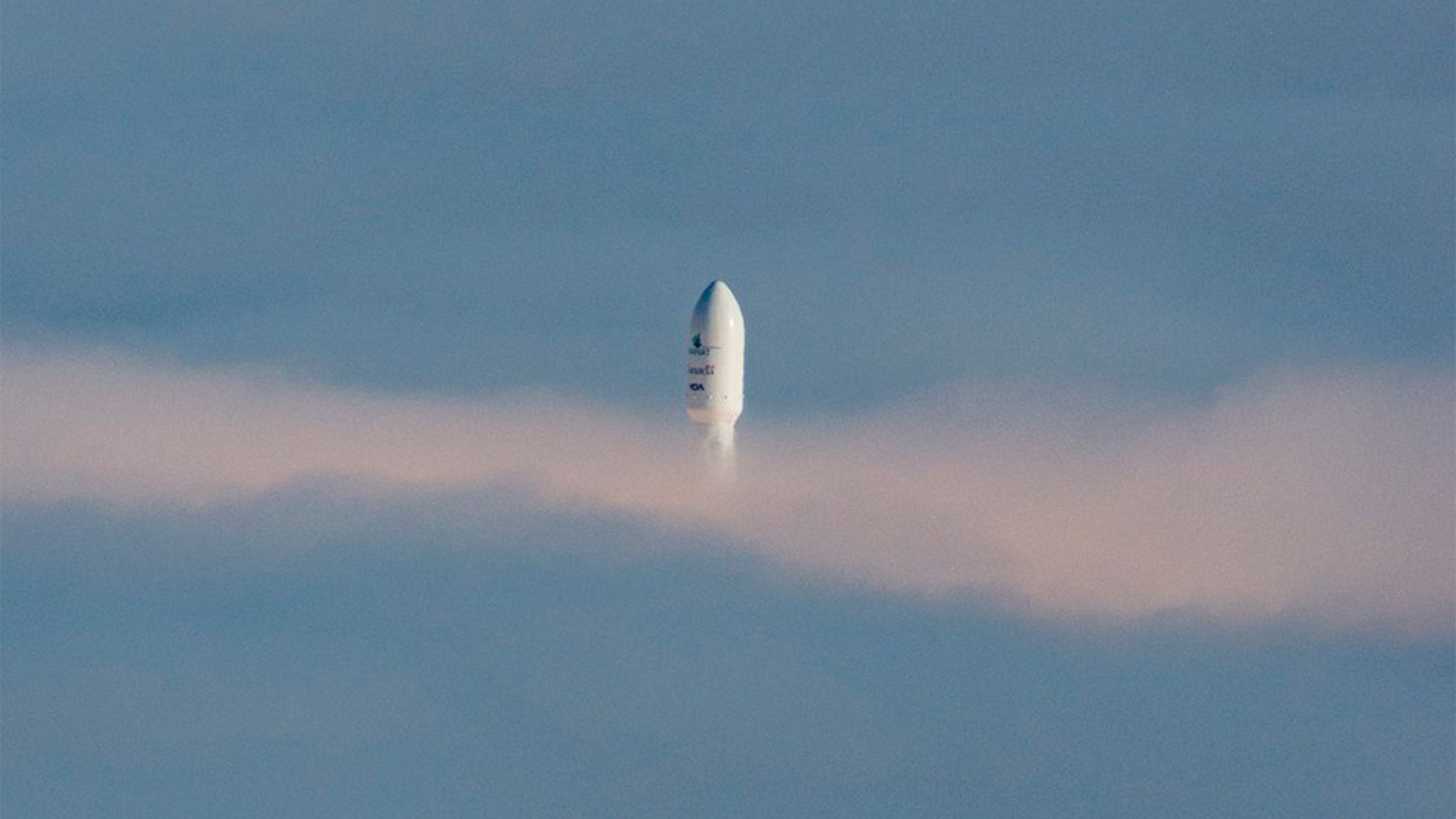
Falcon 9 Rises Up
This closeup photo by SpaceX captures the moment the Falcon 9 emerged from the fog layer above its Vandenberg Air Force Base, California launch site during the Radarsat Constellation Mission.
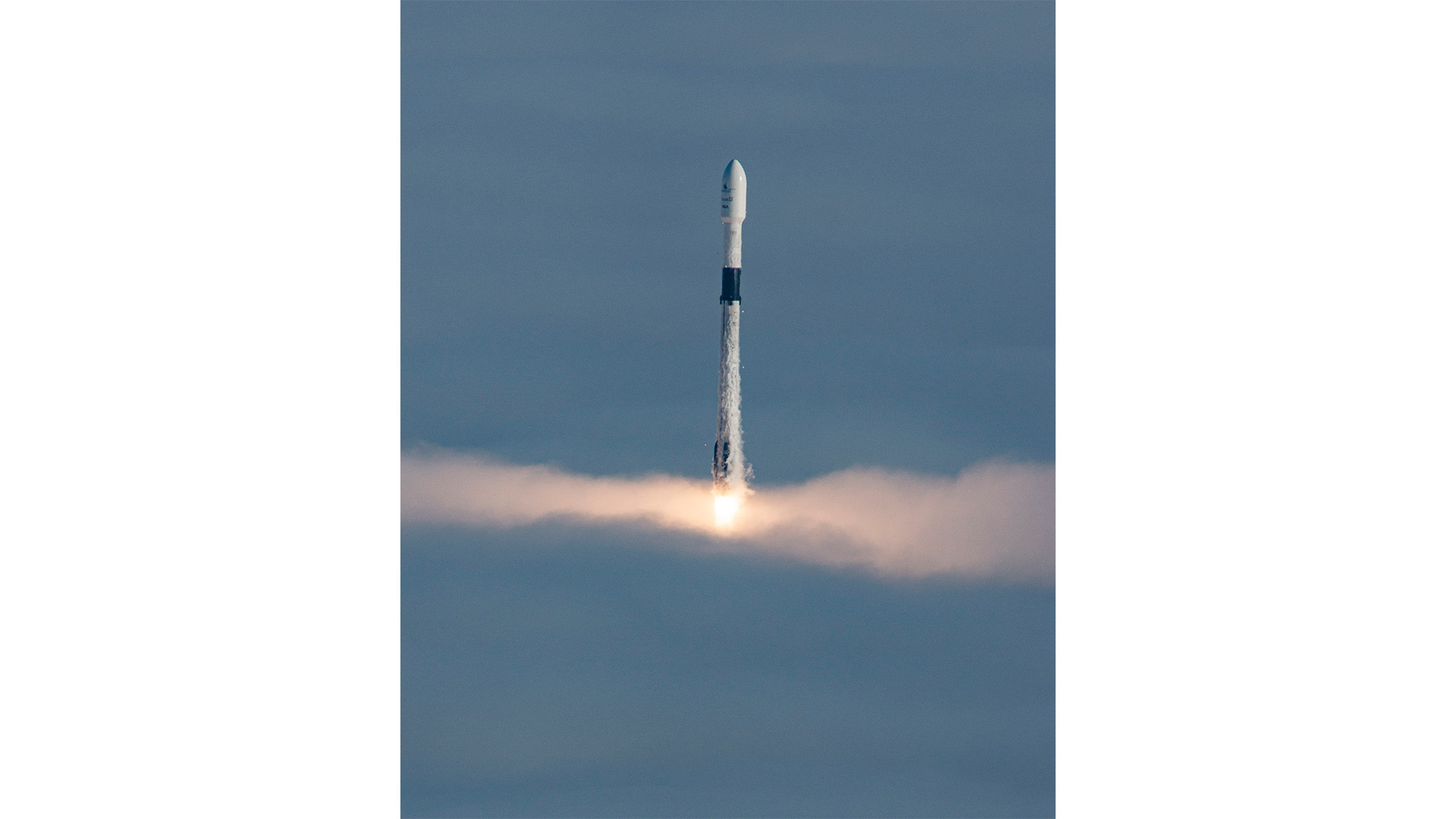
A Clear View
Now, the entire Falcon 9 rocket can be seen above the fog layer as it heads toward space. It took just seconds for the booster to reach clear air after its foggy liftoff.
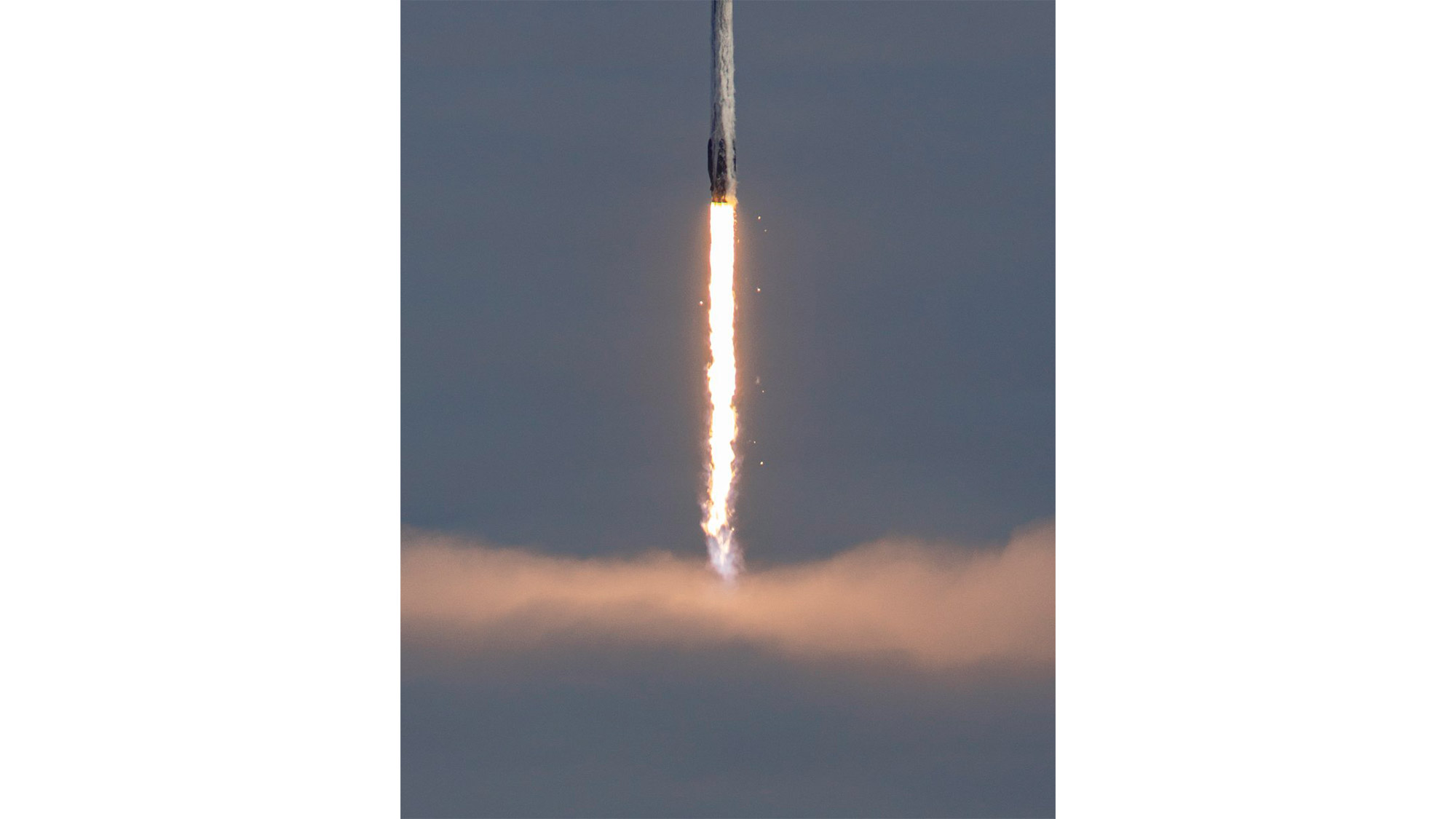
Fiery Ascent
This SpaceX image captures the stunning exhaust plume of the Falcon 9 rocket as it continues its ascent into orbit with Canada's Radarsat Constellation Mission. The Falcon 9 rocket's nine Merlin engines generate 1.7 million pounds of thrust at sea level and are fueled by liquid oxygen and rocket-grade kerosene.
The black objects just above the exhaust plume are the first stage booster's landing legs, which deploy just before landing.
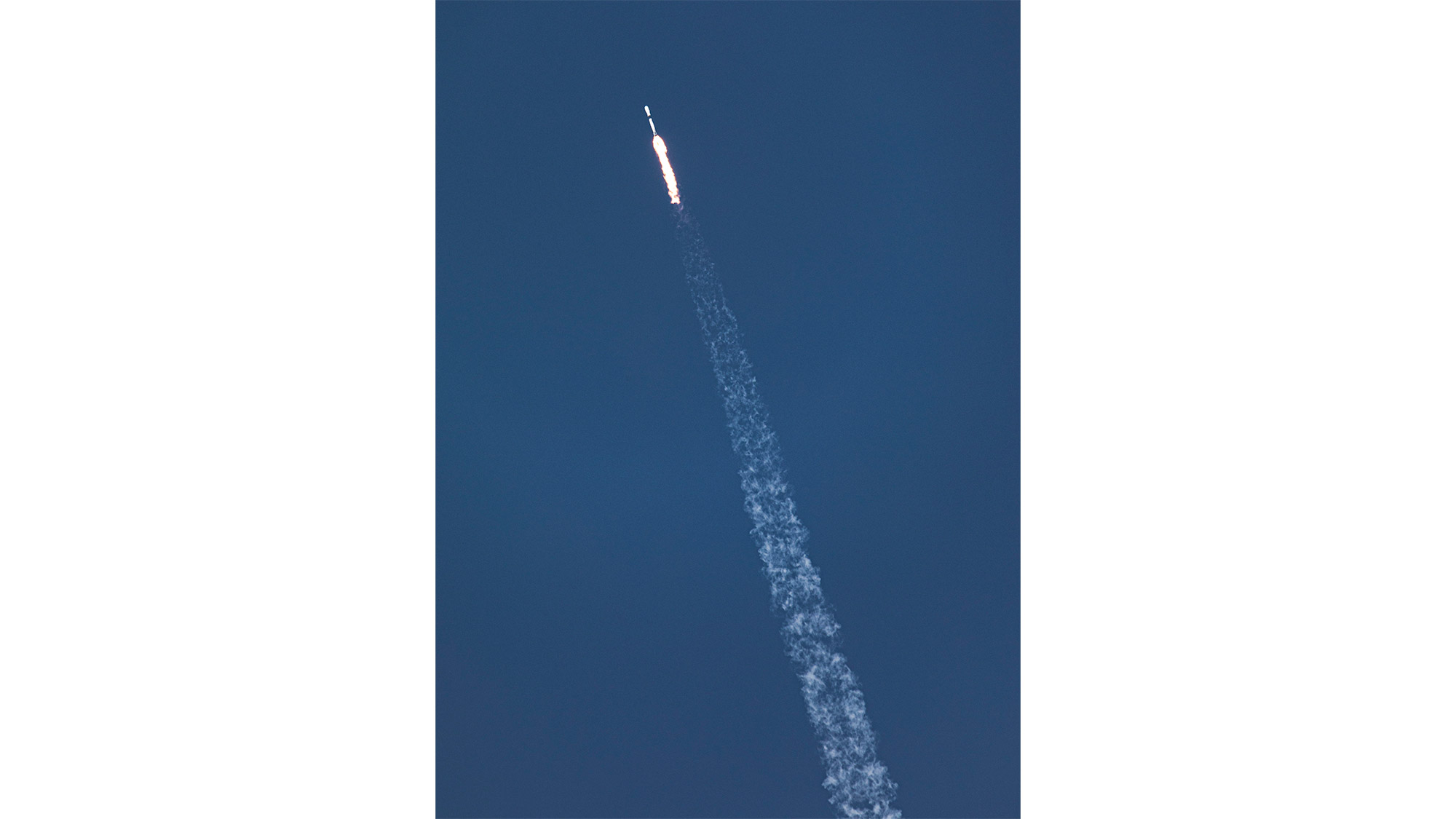
Streaking to Space
Once clear of the fog layer, SpaceX's Falcon 9 soared through a brilliant blue sky as it carried the Radarsat Constellation Mission into orbit. The initial ascent to low-Earth orbit took about 8.5 minutes.
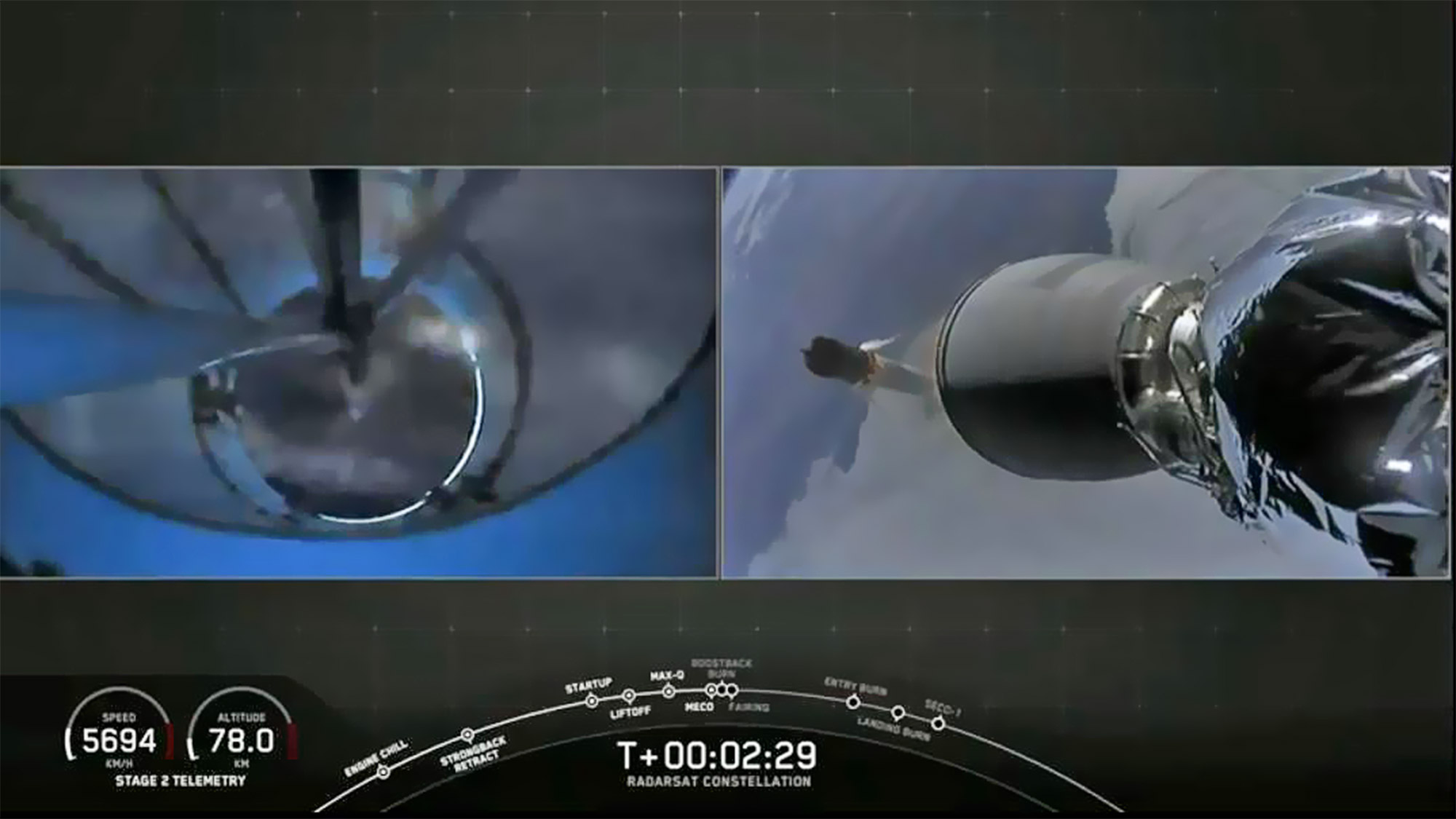
Stage Separation!
Two minutes and 17 seconds into the Radarsat launch, SpaceX's Falcon 9 first stage successfully separated from its second stage to begin the journey back to Earth. That moment is captured here, showing a view just after separation as the first stage (right image) fall away from the upper stage.
The second stage lit its engine to continue the trip to space. Meanwhile, the first stage fired thrusters to head back to Vandennberg, where it aimed to touch down on a pad called Landing Zone 4.
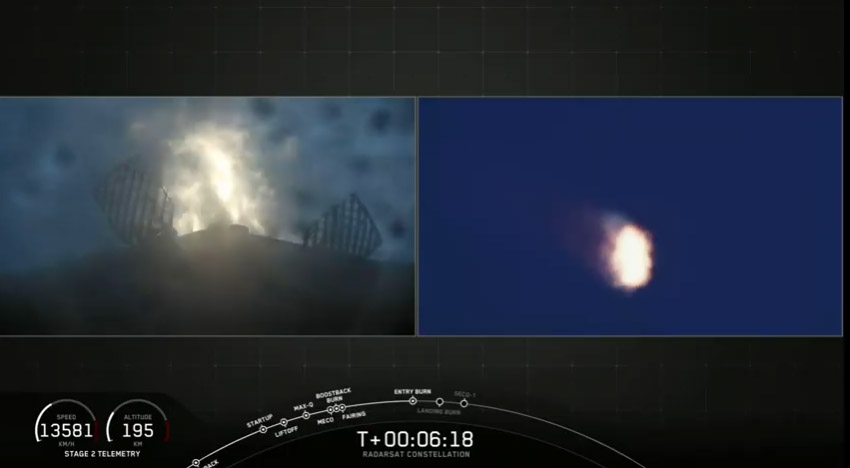
Entry Burn
This is the moment of reentry as the Falcon 9 rocket's first stage descends back to Earth. This entry burn slowed the spacecraft from hypersonic speeds to prepare it for landing.
The booster's Merlin engines can be seen firing in the right view, while the two of the booster's four titanium grid fins, used to steer and stabilize the booster during landing, are visible in the left pane (taken from the rocket itself).
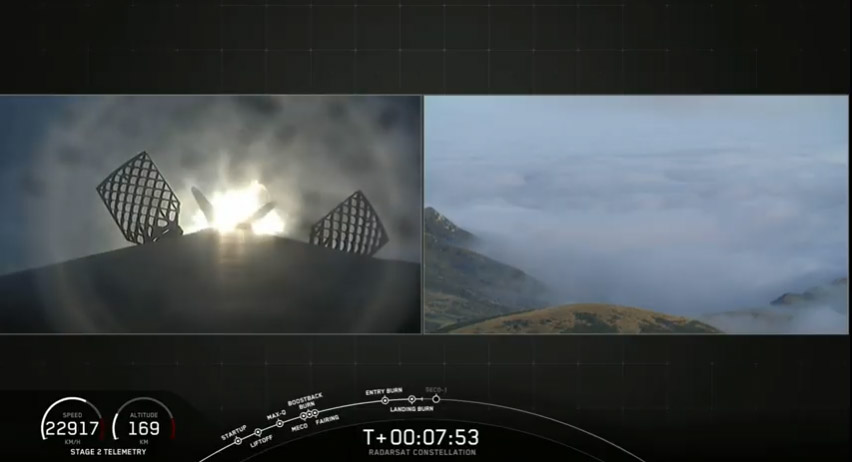
Landing Burn
As SpaceX's Falcon 9 booster neared landing, it fired up its engines one last time in a landing burn as seen in this still from the landing video.
On the left, you can see the landing burn underway, as the Falcon 9's grid fins maintain stability. Two of the rocket's four landing legs can be seen silhouetted by the landing burn's flames.
At right: a view looking out over Landing Zone 4 at Vandenberg Air Force Base in California. The fog that obscured the booster's launch did the same for landing.
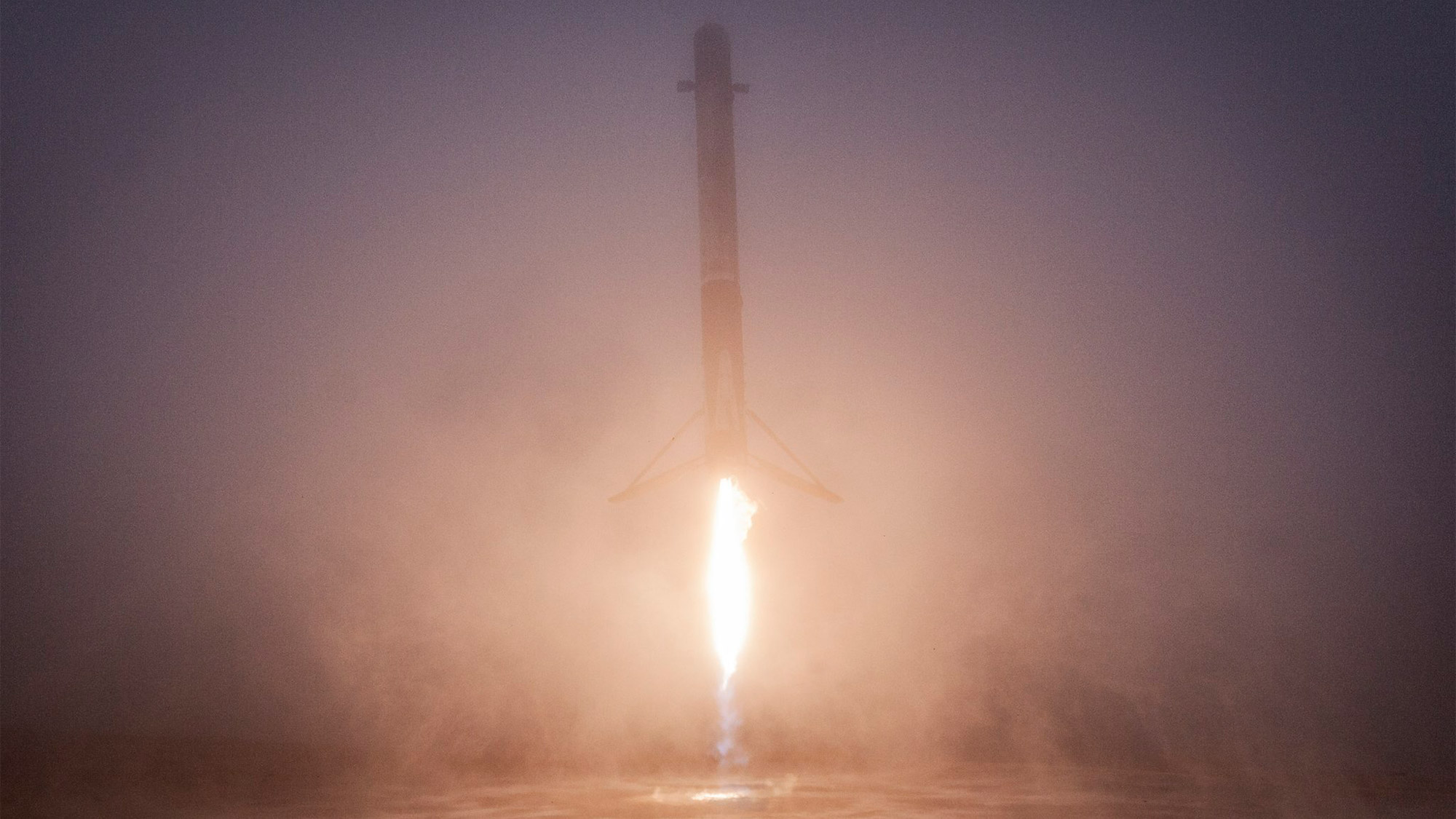
Almost There ...
The Falcon 9 nears touchdown at SpaceX's Landing Zone 4 at California's Vandenberg Air Force Base in this closeup view. The fog posed no problem for the booster's systems, leading to an on-target landing.

Stay on Target ...
In the seconds before touchdown, a SpaceX camera captured this stunning view of the Falcon 9 rocket's landing at Vandenberg Air Force Base. The grid fins are clearly visible at the booster's top while its landing legs are deployed and ready for landing.
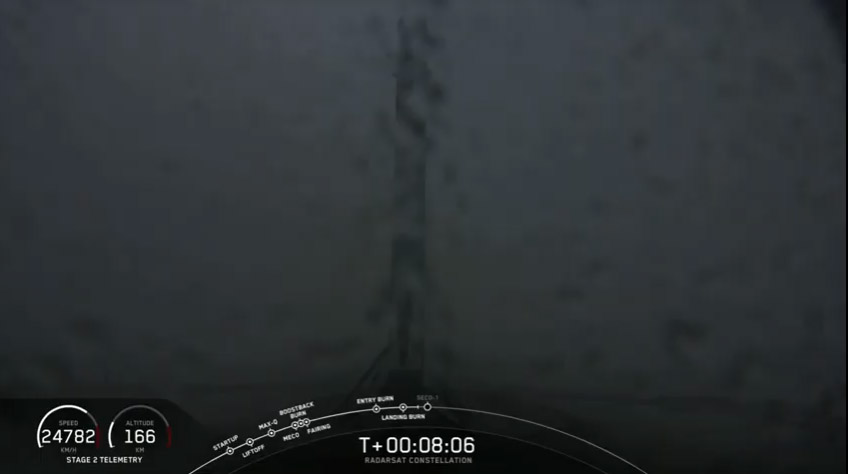
Touchdown!
Just over 8 minutes after launching the Radarsat Constellation Mission, SpaceX's Falcon 9 first stage landed back on Earth at Landing Zone 4 of Vandenberg Air Force Base in California. This still from a SpaceX video camera shows just how foggy and damp the morning was at landing time.
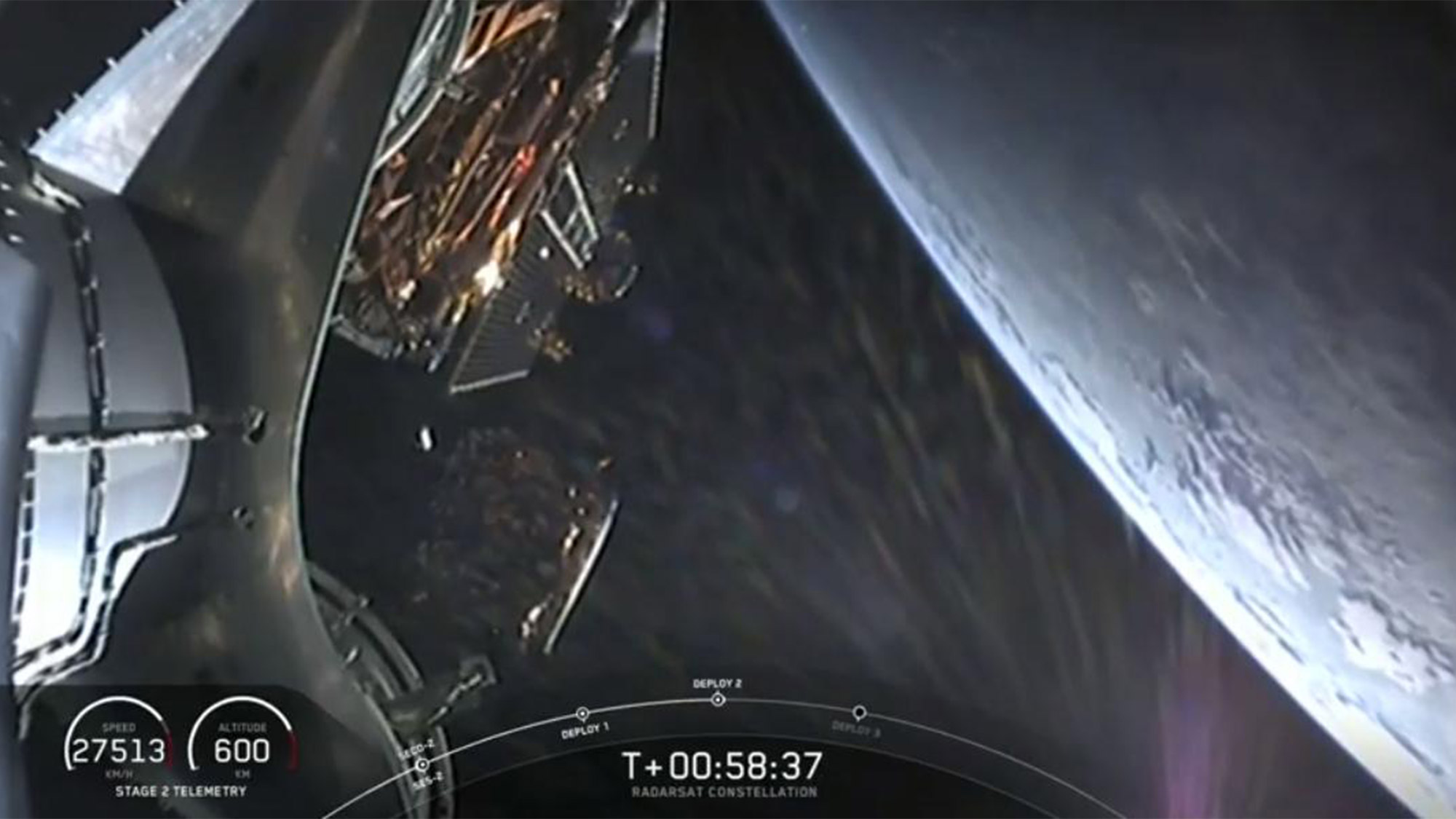
Meanwhile, in Space ...
After successfully launching the Radarsat Constellation Mission and landing the Falcon 9 first stage, SpaceX entered a coast phase for the mission that lasted nearly an hour.
Fifty-four minutes after liftoff, the first of the three Radarsat satellites deployed into orbit, with the other two to follow shortly after. This image shows the second of the three satellites (lower mid-left) as it heads into space. The satellites will ultimately circle the Earth in an orbit 370 miles (600 kilometers) up, Canadian Space Agency officials have said.
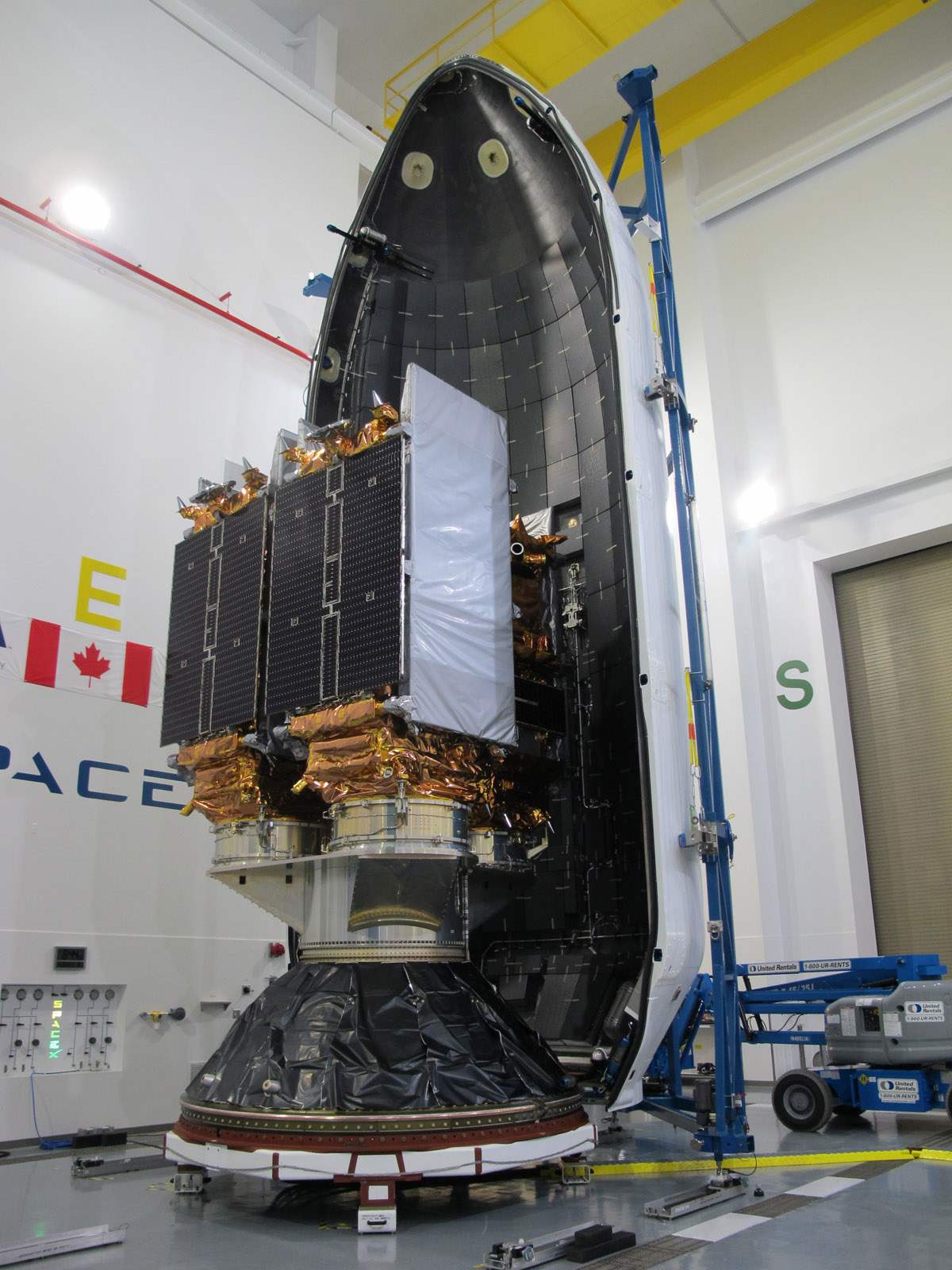
Radarsat Trio
This image, taken before launch, shows how the three Radarsat Constellation Mission satellites were packed for launch inside SpaceX's Falcon 9 payload fairing (half of which is visible in the background).
"The RCM will help create precise sea ice maps of Canada’s oceans and the Great Lakes to facilitate navigation and commercial maritime transportation. Each satellite also carries an Automatic Identification System receiver, allowing improved detection and tracking of vessels of interest," SpaceX officials wrote in a statement.
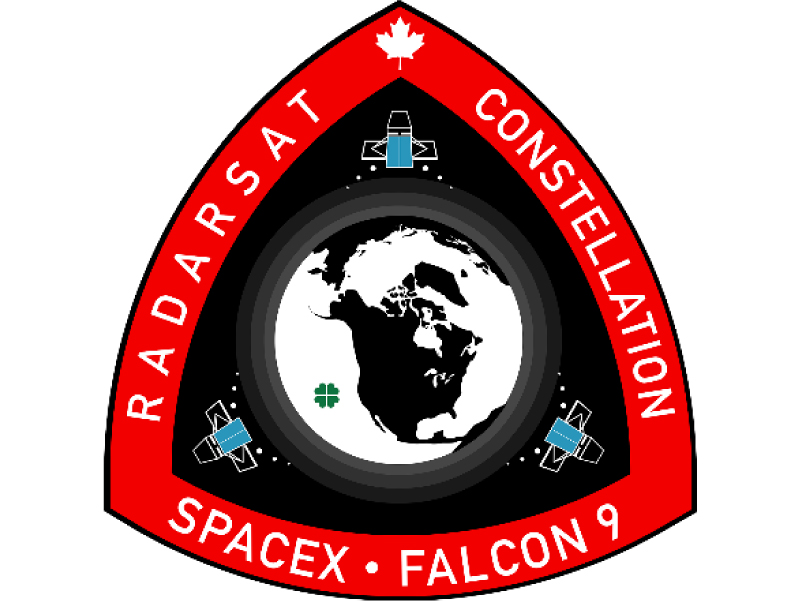
The mission patch for SpaceX's Radarsat Constellation Mission launch of June 12, 2019.
Shown here are the three RCM satellites in their respective orbital positions, as well as SpaceX's traditional four-leaf clover, a standard of all SpaceX mission patches, for luck. A maple leaf signifying the Canadian origins of the mission is visible at top.
Full Story: SpaceX Rocket Launches Radarsat Satellites, Aces Foggy Landing

Tariq is the Editor-in-Chief of Space.com and joined the team in 2001, first as an intern and staff writer, and later as an editor. He covers human spaceflight, exploration and space science, as well as skywatching and entertainment. He became Space.com's Managing Editor in 2009 and Editor-in-Chief in 2019. Before joining Space.com, Tariq was a staff reporter for The Los Angeles Times covering education and city beats in La Habra, Fullerton and Huntington Beach. In October 2022, Tariq received the Harry Kolcum Award for excellence in space reporting from the National Space Club Florida Committee. He is also an Eagle Scout (yes, he has the Space Exploration merit badge) and went to Space Camp four times as a kid and a fifth time as an adult. He has journalism degrees from the University of Southern California and New York University. You can find Tariq at Space.com and as the co-host to the This Week In Space podcast with space historian Rod Pyle on the TWiT network. To see his latest project, you can follow Tariq on Twitter @tariqjmalik.









